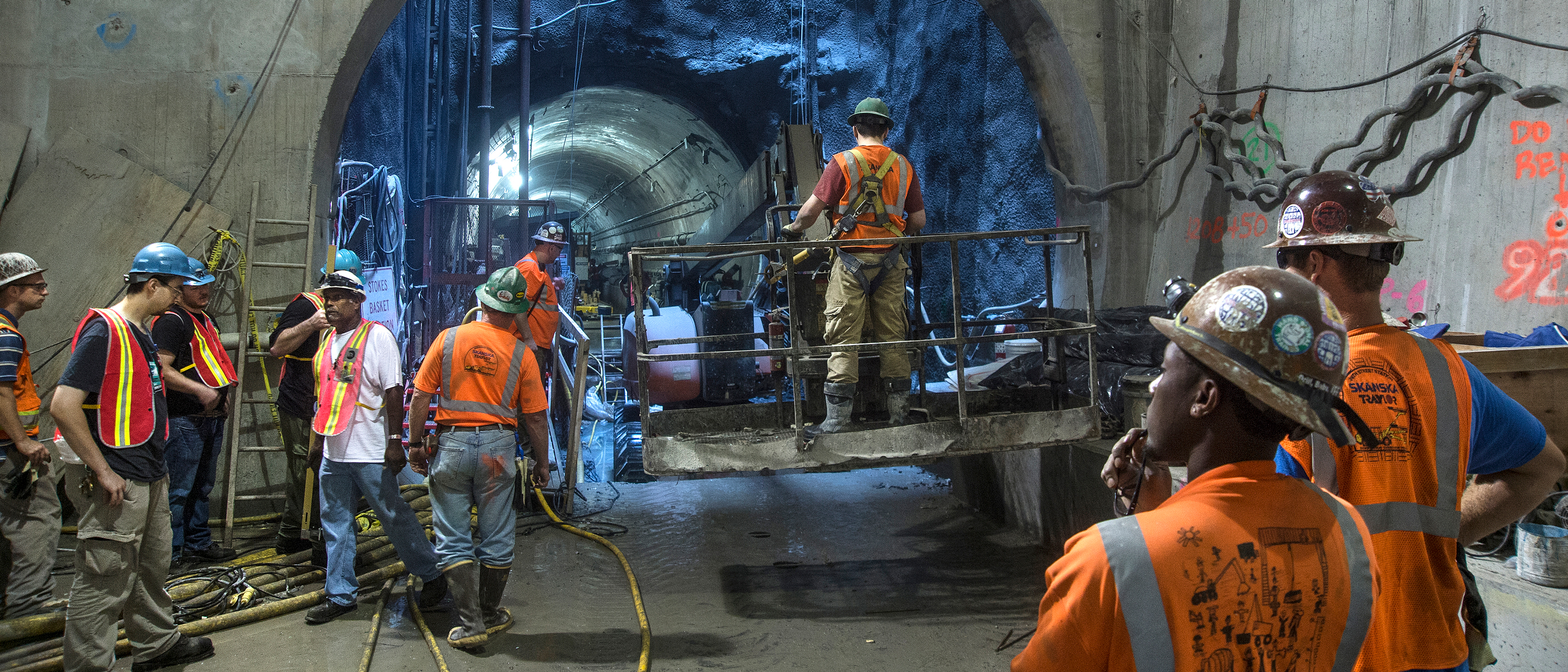
The huge cost of new transit infrastructure will make it nearly impossible to expand and modernize the region’s overcrowded subways and commuter rails, undermining economic growth and failing to serve outlying communities. Other global cities are pressing their advantages, attracting new business, and building important economically driven infrastructure.
These extraordinarily high costs are not the fault of any single institution or individual. They reflect decades of planning and building practices, such as complicated site logistics, counterproductive regulations, complex codes, institutional inefficiencies, bonding requirements, and outdated labor practices.
As the high costs contributing to the slow pace of project delivery increase and project schedules are continually stretched, public confidence in government to deliver improvements erodes. Budgets are surpassed, deadlines are missed, and the responsible agencies struggle to complete projects.
Cost overruns and long completion times are particularly onerous when building subways and other rail transit. East Side Access (ESA), for example, cost over $519 million per mile for tunneling and track, compared to $107 million per track mile for London’s new Crossrail project. With subways and commuter rails already over capacity, and the population expected to grow by four million people and two million jobs by 2040, costs and delays will only add to the frustrations of riders. And completing critical projects such as the Gateway tunnels connecting New York and New Jersey, and extending the Second Avenue Subway (SAS), will be more difficult.
Every aspect of the project-delivery process contributes to high costs and delays. Based on detailed analysis of the MTA’s three megaprojects—#7 Line Extension, Second Avenue Subway, and East Side Access—high costs were driven by the political processes that govern construction, agency management and practices, and labor work rules that determine how projects are staffed and built.
- Politics and public processes lead to inaccurate budgets and timelines, lengthy environmental reviews that undervalue the economic and environmental costs of project delays, and planning decisions that engage community and business stakeholders too late in the process.
- Institutional practices include limited constructability assessments and excessive customization, fractured construction management, and an overly complex procurement process.
- Labor practices include out-of-date work rules that lead to excessive staffing and unproductive work time, requirements to use operations workforce on construction projects, and limited training capacity that is worsened by an uneven pipeline of projects that interrupts the flow of steady of work.
The entire process of budgeting, designing, bidding, and building transportation megaprojects needs to be reformed
Outcomes
Greater productivity and more efficient decision-making and management would result in faster and better project delivery, and allow the MTA to accelerate the construction of megaprojects. The impact of these reforms would depend on how quickly and successfully they are implemented. Delivering projects on time, on budget, and at lower costs should also boost public confidence and result in increased capital funding for infrastructure. Reforms could help implement a larger capital program with a steady pipeline of projects that could maintain or increase construction-industry employment.
Paying for it
Implementing these reforms would sharply reduce the costs of new rail projects, and could change government rules or industry practices that ultimately reduce costs for other infrastructure projects as well. Some upfront and ongoing administrative costs would be needed to introduce new management and labor processes.